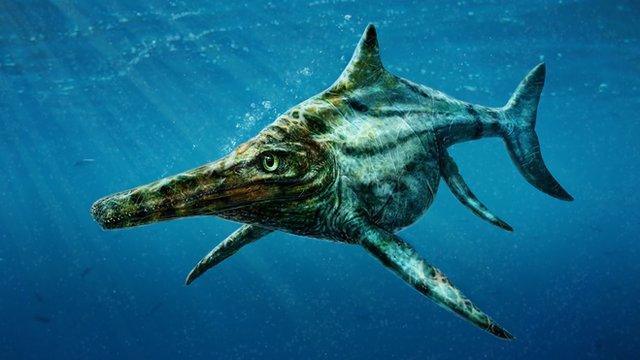Seven new species of frogs have been discovered
- Published
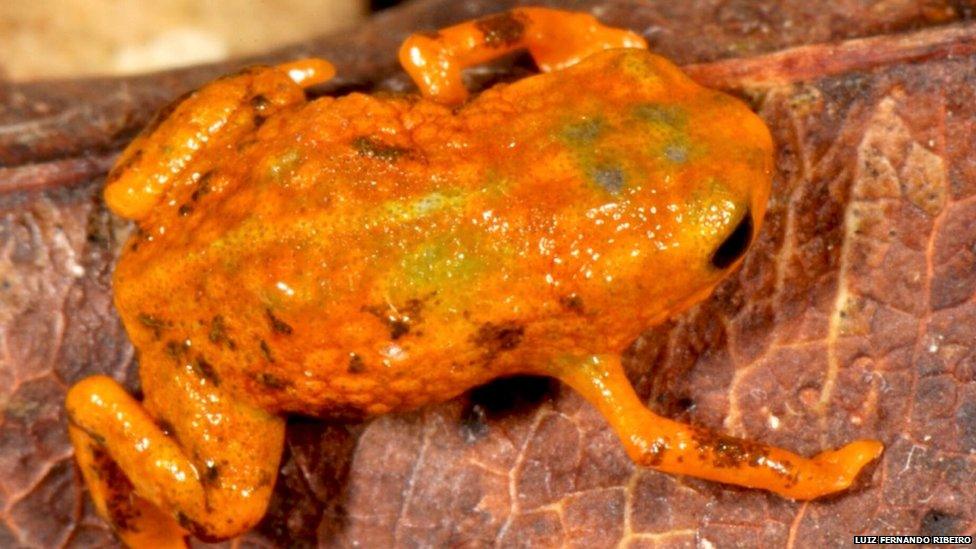
Seven new species of tiny frogs have been discovered on seven different mountains in Brazil.
The tiny frogs are part of the Brachycephalus species and all of them grow no bigger than 1cm long, even the adults.
Some of them also have brightly coloured poisonous skin, to help ward off any predators who would turn them into a meal.
The brighter their skin, the more deadly they are.
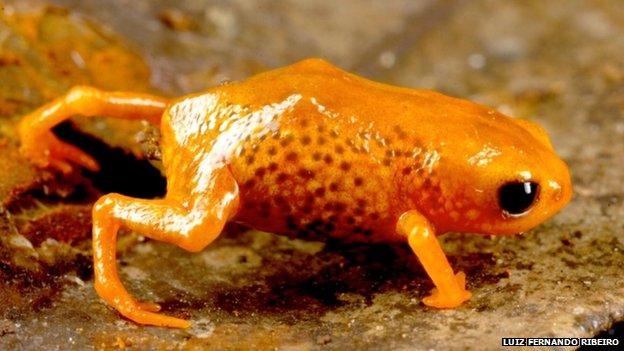
The Brachycephalus leopardus is named after the leopard-like spots on its belly.
The researchers who found the frogs often had trouble trying to find them.
Professor Marcio Pie, one of the researchers who discovered the frogs said: "You can hear them singing and there's probably hundreds of them, but you simply can't catch them! Because once you get closer, just from the vibration in the ground, they keep silent for, say, 20 minutes or half an hour. And then you have to go through the leaf litter very carefully with your hands."

The tiny frogs grow no bigger than 1cm, even the adults.
The frogs like to live in the cool cloud-forests of the mountains in the south of Brazil, and tend to spend their lives there.
The valleys at the bottom of the mountains tend to be much warmer, meaning the different species of frogs all live on their separate mountains like islands, without ever meeting.
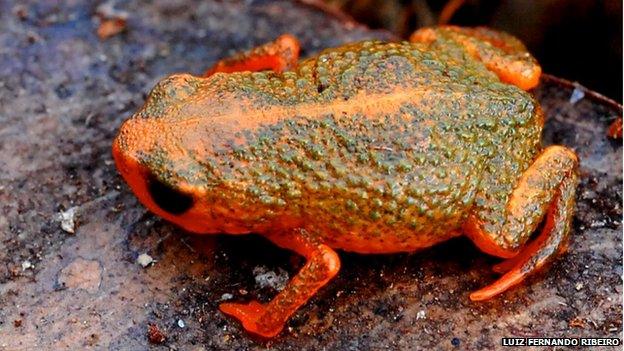
This frog is called the Brachycephalus verrucosus, because of the warts on its back.
Scientists think there are more unique species in this area, per square kilometre, than the Amazon rainforest.
The researchers who discovered the new species say they think they have already found four more new species of frog, and have more expeditions planned on different mountains.
- Published27 May 2015
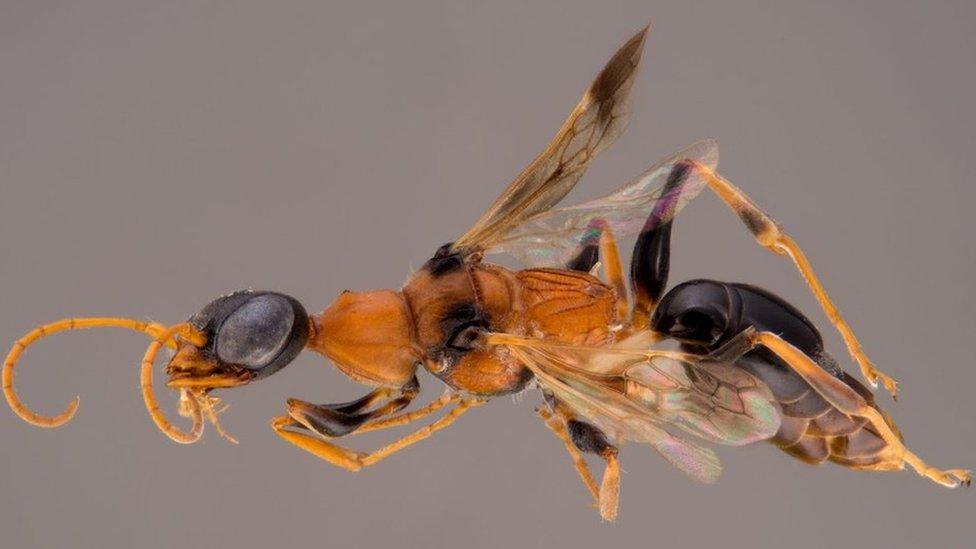
- Published30 October 2014
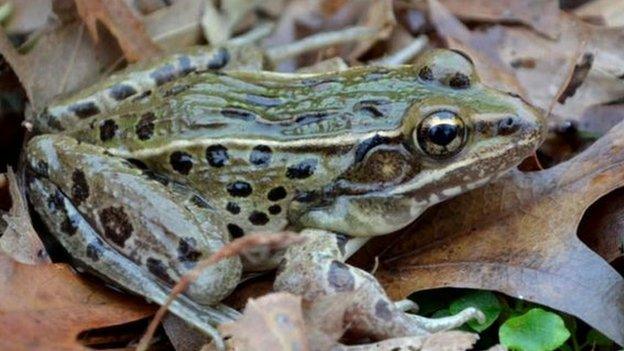
- Published12 January 2015
